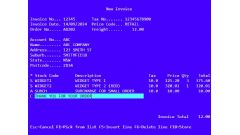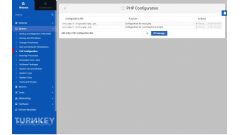Setting a Maximum Page Width Using CSS
by johna | February 16, 2008 | HTML/CSS Web Development
When designing a web site one of the first decisions to make is whether to use a fixed-width, liquid or other type layout.
Fixed-width designs are popular but have certain limitations. If you design for 800x600 your layout may look much too small at a higher resolution. If you design for 1024x768, lower resolution screens will require a horizontal scrollbar.
Liquid designs, although not the perfect solution, have less compromises. At very low resolutions they can become very difficult to read and at very high resolutions line lengths can become very long and also difficult to read.
A good compromise in my opinion is to use a liquid layout but set a limit to the width.
One method of doing this reliably on popular browsers is to use the following styling:
Fixed-width designs are popular but have certain limitations. If you design for 800x600 your layout may look much too small at a higher resolution. If you design for 1024x768, lower resolution screens will require a horizontal scrollbar.
Liquid designs, although not the perfect solution, have less compromises. At very low resolutions they can become very difficult to read and at very high resolutions line lengths can become very long and also difficult to read.
A good compromise in my opinion is to use a liquid layout but set a limit to the width.
One method of doing this reliably on popular browsers is to use the following styling:
<div style="max-width:1004px;width:expression(document.body.clientWidth>1004?'1004px':'auto')">In this case, the maximum width is set to 1004 (for 1024x768 screen resolution less 20px for the vertical scroll bar).
Related Posts
Another pointless project - the programmable digital watch
by johna | January 20, 2025
I've come up with yet another pointless project. Would you like a watch that you could program yourself - but not a "smart watch"?
Converting dBase IV programs to run in the browser
by johna | September 13, 2024
Some pointless entertainment trying to get some old dBase programs running in the browser.
How to set up a debugging using the Turnkey Linux LAMP stack and VS Code
by johna | December 19, 2023
The second part in my guide to setting up a website and database using the Turnkey Linux LAMP stack.




Comments
There are no comments yet. Be the first to leave a comment!